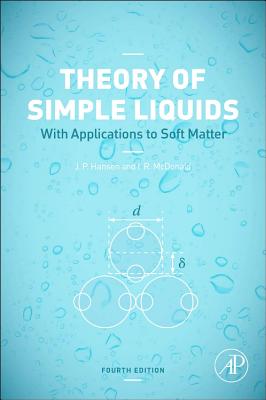Oracle Digital Assistant: A Guide to Enterprise-Grade Chatbots
暫譯: Oracle 數位助理:企業級聊天機器人指南
Bors, Luc, Samajdwer, Ardhendu, Van Oosterhout, Mascha
商品描述
Use this book as an on-ramp to the development of enterprise-grade chatbots and digital assistants. It is based on real-life experience and explains everything you need to know to start building your own digital assistant (DA) using Oracle technologies. You will become familiar with the concepts involved in DA development from both a user experience and technical point of view. You will learn to create DAs using Oracle technologies, including the Oracle Digital Assistant Cloud.
In the first part of the book, you will learn the basic principles of the digital assistant (AKA Chatbot) technology. You will be guided through the steps involved in designing a DA, including how to make sure that the user receives a satisfying experience when using the assistant. In the second part of the book, you will learn how to implement the digital assistant that was designed in the first part. You will begin with a basic implementation, later enhancing that implementation with agents, multi-language support, and webviews. The final part of the book adds a deep dive into custom component development with an example around sentiment analysis and speech.
What You Will Learn
- Design digital assistants to meet business requirements
- Implement a great user experience for your digital assistants
- Translate digital assistant design into real implementations
- Build multi-language support into your assistants
- Enhance digital assistants with webviews
- Create custom components to extend feature sets
Who This Book Is For
Designers and developers who want to implement digital assistants using Oracle technologies and the cloud platform. This book is ideal for readers new to creating digital assistants, and covers aspects of design, including user experience design, before moving into the technical implementation. Readers experienced in creating digital assistants on other platforms will find the book useful for making the transition to Oracle technologies and the Oracle Digital Assistant Cloud.
商品描述(中文翻譯)
使用本書作為開發企業級聊天機器人和數位助理的入門指南。本書基於實際經驗,解釋了您需要了解的所有內容,以開始使用 Oracle 技術構建自己的數位助理 (DA)。您將從用戶體驗和技術的角度熟悉 DA 開發所涉及的概念。您將學會使用 Oracle 技術創建 DA,包括 Oracle Digital Assistant Cloud。
在本書的第一部分,您將學習數位助理(又稱聊天機器人)技術的基本原則。您將被引導完成設計 DA 的步驟,包括如何確保用戶在使用助理時獲得滿意的體驗。在本書的第二部分,您將學習如何實現第一部分設計的數位助理。您將從基本實現開始,然後通過代理、多語言支持和網頁視圖來增強該實現。本書的最後一部分深入探討自定義組件開發,並以情感分析和語音為例。
您將學到的內容:
- 設計數位助理以滿足業務需求
- 為您的數位助理實現出色的用戶體驗
- 將數位助理設計轉化為實際實現
- 在您的助理中構建多語言支持
- 使用網頁視圖增強數位助理
- 創建自定義組件以擴展功能集
本書適合對象:
設計師和開發人員,想要使用 Oracle 技術和雲平台實現數位助理。本書非常適合新手讀者,涵蓋設計的各個方面,包括用戶體驗設計,然後再進入技術實現。對於在其他平台上創建數位助理有經驗的讀者,本書將對轉向 Oracle 技術和 Oracle Digital Assistant Cloud 有所幫助。
作者簡介
Luc Bors is Partner and Technical Director at eProseed, and member of the global eProseed CTO Office. He has over 20 years of experience in IT. He is a Certified Specialist in Oracle ADF, Oracle MAF, Oracle MCS, and Oracle JET. He is very interested in new technologies such as Chatbots, Digital Assistants, and IoT.
Luc was promoted to Oracle ACE Director in 2015 because of his experience and knowledge, and for his willingness to share with the community. In 2017 he was among the first to become an Oracle Developer Champion. He is the author of the book Oracle Mobile Application Framework Developer Guide, a speaker at international conferences, and regularly publishes articles on his blog and in several printed and digital magazines.
Ardhendu Samajdwer is Senior R&D Architect and UI consultant at eProseed. He has more than eleven years of experience in the IT industry, with more than eight of those years focused on Oracle technologies. He hails from a Java, Oracle ADF, and WebCenter background. He has been part of numerous projects involving migration and implementation of enterprise-level applications. With a primary focus on UI development activities, he is always keen to learn and explore new technologies such as digital assistants.
Mascha van Oosterhout is an industrial design graduate from the Faculty of Human Factors & Design at Delft University of Technology in The Netherlands. She has been a user experience design (UXD) consultant for more than 20 years. She has worked in both private sector companies and public sector organizations, and in support of start-up initiatives.
Mascha is experienced in designing, reviewing, and testing graphically clear and user-friendly interfaces. She has passion for putting the end-user first and foremost. She gathers user requirements, then specifies interaction design by means of wireframes and graphical layouts. Recently she has increased focus on chatbot dialogs because she is convinced that, in many contexts, conversations are a more natural way to interact than through a graphical interface. She is an expert in user research techniques such as persona modeling, formulating user scenarios, interviewing stakeholders, doing cart sorting research, and usability testing.
作者簡介(中文翻譯)
Luc Bors 是 eProseed 的合夥人及技術總監,也是全球 eProseed CTO 辦公室的成員。他在資訊科技領域擁有超過 20 年的經驗。他是 Oracle ADF、Oracle MAF、Oracle MCS 和 Oracle JET 的認證專家。他對於新技術如聊天機器人、數位助理和物聯網 (IoT) 非常感興趣。
Luc 於 2015 年因其經驗和知識,以及願意與社群分享而被晉升為 Oracle ACE Director。2017 年,他成為首批 Oracle Developer Champion 之一。他是書籍 Oracle Mobile Application Framework Developer Guide 的作者,並在國際會議上擔任演講者,定期在他的部落格及多本印刷和數位雜誌上發表文章。
Ardhendu Samajdwer 是 eProseed 的高級研發架構師及 UI 顧問。他在資訊科技產業擁有超過十一年的經驗,其中超過八年專注於 Oracle 技術。他擁有 Java、Oracle ADF 和 WebCenter 的背景。他參與了多個涉及企業級應用程式的遷移和實施專案。專注於 UI 開發活動,他始終渴望學習和探索新技術,如數位助理。
Mascha van Oosterhout 是荷蘭代爾夫特科技大學人因與設計學院的工業設計畢業生。她擔任用戶體驗設計 (UXD) 顧問已有超過 20 年的經驗。她曾在私營企業和公共部門組織工作,並支持創業計畫。
Mascha 在設計、審查和測試圖形清晰且用戶友好的介面方面擁有豐富的經驗。她熱衷於將最終用戶放在首位。她收集用戶需求,然後通過線框圖和圖形佈局來指定互動設計。最近,她對聊天機器人對話的關注增加,因為她相信在許多情境中,對話是一種比圖形介面更自然的互動方式。她是用戶研究技術的專家,如角色建模、制定用戶場景、訪談利益相關者、進行卡片分類研究和可用性測試。






























